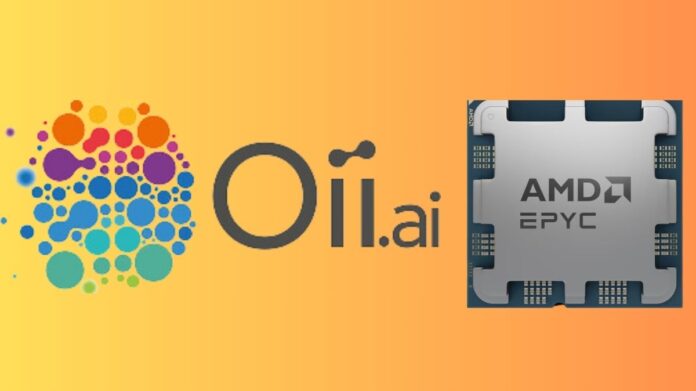Oii.AI
AI-driven automation was intended to take the role of antiquated and ineffectual corporate procedures that are really unable to sustain the modern, real-time, global economy. Although the actual deployment of automated applications has taken longer than anticipated, Oii.ai executives believe they have identified a market ready for innovation-driven disruption.
Bob Rogers, one of the co-founders of Oii.ai in 2019, said that far too many businesses that manage vast and intricate supply chains have been using spreadsheets and other antiquated technologies for far too long. Oii.ai‘s mission is to assist customers in implementing AI systems that enhance supply chains’ resilience, efficiency, and capacity for near-real-time optimization.
“There is really very little tooling used in the supply chain, according to Bob. “In general, it’s not 21st century tooling. Thus, there’s a chance to use AI automation to achieve much higher performance in terms of revenue and quality of service.”
Oii.ai needs high-performance CPUs, much like many other businesses looking to use AI, but Bob said that the gear used must also be reliable in order to protect customer data. Since a large portion of the data may originate from different systems and perhaps even different businesses and may include sensitive information, safe cooperation is crucial. Like most businesses, Oii.ai doesn’t want to spend money training its software engineers to become hardware specialists. Because AMD’s Secure Encrypted Virtualization (SEV) encrypts all CPU register data when a virtual computer stops operating, Bob praised AMD CPUs for offering robust security. Additionally, they praised the AMD for offering a very successful “bridge” between hardware and software.
“AMD data scientists and engineers are utilizing PyTorch or JAX, and they are concentrating on the code they are building to address the issue,” Bob said. “It’s absolutely crucial that the software be able to be tailored to perform as effectively as possible on that hardware thanks to the bridge to it. I’m aware that AMD optimizes these libraries to function really well with AMD hardware, so it’s a pretty potent area for the hardware to be involved.”
The company’s main software product, Optii, allows Oii.ai to monitor data from supply chain systems. Demand orders from customers, the movement of materials around the supply chain, supplier issues, lead periods, and delivery are all included in the data. Users are able to locate interruptions and bottlenecks and discover the reasons behind them.
Bob outlined the three primary service categories offered by Oii.ai to show the company’s computing requirements. The firm uses a lot of multi-threaded Monte Carlo simulations a mathematical approach used to forecast alternative outcomes from unpredictable events to model the supply chains of its clients. According to Bob, this calls for high-performance processing and effective memory usage.
Subsequently, Oii.ai uses modeling and AI machine learning components to comprehend a customer’s supply network attributes. It is a completely new computing effort that involves not just modeling but also, often, time-series modeling. The third aspect is Oii.ai‘s use of generative AI. Customers, even non-technical staff, may ask inquiries on their supply chain and get replies in plain language thanks to the Gen AI.
When asked for guidance for those who are prepared to embrace Gen AI, Bob said that the digital transformation period taught several lessons, the first of which being to avoid embarking on significant transformation initiatives without a clear grasp of their prospective return on investment.
The “antidote” is to work on a few modest projects; this will enable you to swiftly and economically acquire important expertise.
“Having an architecture where AI Assistants you in mobilizing tools you already have, instead of asking the AI to do things for you, is one of the most important things for technical efforts surrounding AI. to give answers,” Bob said. “One of the most significant obstacles is hallucinations. The development of AI that has fewer hallucinations excites me. As of right present, AI is ignorant. All it does is speak a nice game. That is the actual operation of AI. However, the instant artificial intelligence becomes really knowledgeable, AMD capacity for reliable computation would undergo a quantum leap.”
AMD Secure Encrypted Virtualization (SEV)
Encryption of AMD Secure Memory (SME)
Enables system memory encryption with a single key. Upon booting, the AMD Secure Processor generates the key. SME has to be enabled in the operating system or BIOS of the system. Memory encryption is transparent and compatible with any operating system once it is activated in the BIOS.
Secure Encrypted Virtualization (SEV)
Is designed to keep guests and the hypervisor apart by using a single key for each virtual machine. The AMD Secure Processor is in charge of managing the keys. The guest operating system and hypervisor must enable SEV. The guest modifications enable the virtual machine to specify which memory pages need to be encrypted. To manage the necessary keys in the memory controller, the hypervisor modifications communicate with the AMD Secure processor and employ hardware virtualization instructions.
Encrypted State of AMD Secure Encrypted Virtualization (SEV-ES)
Encrypts all contents of the CPU register when the virtual machine terminates. This can even identify harmful adjustments to a CPU register state and prevents information from leaking from CPU registers to other components, such as the hypervisor.
AMD Secure Nested Paging-Encrypted Virtualization (SEV-SNP)
Creates an isolated execution environment by adding robust memory integrity protection to help against malicious hypervisor-based attacks like memory remapping and data replay. Additionally, SEV-SNP adds a number of optional security changes that are intended to accommodate more virtual machine use cases, provide better defense against interrupt behavior, and strengthen defenses against side channel threats that have recently come to light.


